
Best Books for Understanding the Stock Market
Contents
- 1 Stock market books
- 1.1 Best Books for Understanding the Stock Market
- 1.2 Introduction to Stock Market Books
- 1.3 1. The Intelligent Investor by Benjamin Graham
- 1.4 2. A Random Walk Down Wall Street by Burton G. Malkiel
- 1.5 3. Common Stocks and Uncommon Profits by Philip Fisher
- 1.6 4. The Little Book of Common Sense Investing by John C. Bogle
- 1.7 5. Market Wizards by Jack D. Schwager
- 1.8 6. One Up On Wall Street by Peter Lynch
- 1.9 Advantages of Reading Stock Market Books
- 1.10 Disadvantages of Reading Stock Market Books
- 1.11 Conclusion
- 1.12 FAQs
- 1.13 Stock market books
- 1.14 Yearly Stock Market Reviews and Predictions: Insights and Strategies for Investors
Stock market books
Best Books for Understanding the Stock Market
The stock market is often perceived as complex and intimidating, especially for beginners. However, many seasoned investors and analysts believe that a strong foundation in stock market principles can be built by reading the right books. Books on the stock market not only provide theoretical insights but also offer practical advice based on real-world experiences. In this article, we will discuss some of the best books for understanding the stock market, outlining their key takeaways, advantages, and potential drawbacks. Whether you are a novice or an experienced trader, these books can help you make more informed decisions and navigate the financial markets with greater confidence.


Introduction to Stock Market Books
Understanding the stock market requires more than just watching news channels or reading market headlines. To truly grasp the intricacies of stock trading, investment strategies, and market psychology, one needs to dive into well-researched and thoughtfully written literature. Books about the stock market can serve as invaluable resources, offering insights from experienced investors, economists, and financial experts.
Books on this subject range from technical analysis to long-term investment strategies, risk management, behavioral finance, and more. They provide a thorough understanding of market dynamics and help investors develop the mindset needed to succeed in the stock market.
1. The Intelligent Investor by Benjamin Graham
Overview:
Benjamin Graham, considered the father of value investing, wrote “The Intelligent Investor” in 1949. Even decades after its publication, the book remains one of the most influential texts for investors. Graham’s approach to investing focuses on the principles of value investing, emphasizing the importance of long-term strategies over short-term speculation.
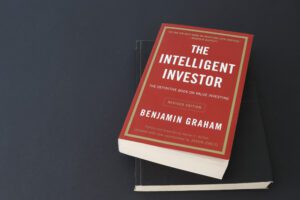

Key Takeaways:
- Value Investing: This strategy involves identifying stocks that are undervalued compared to their intrinsic value.
- Margin of Safety: Investors should always invest with a margin of safety, i.e., buy securities for less than their intrinsic value to minimize risk.
- Investor vs. Speculator: Graham draws a clear line between an investor, who focuses on long-term gains, and a speculator, who seeks short-term profits.
Advantages:
- Timeless principles that are applicable to both new and experienced investors.
- Focus on minimizing risk while maximizing long-term returns.
- Encourages a disciplined and thoughtful approach to investing.
Disadvantages:
- The language and concepts might feel outdated or difficult for some modern readers.
- It is heavily focused on long-term investing, which may not appeal to day traders or those looking for quick profits.
Example:
If you are considering buying a stock, Graham suggests that you look at the company’s financials, such as its earnings, debt, and cash flow, and compare these to its current stock price. If the stock is trading below its intrinsic value, it might be a good buy.
2. A Random Walk Down Wall Street by Burton G. Malkiel
Overview:
Burton Malkiel’s “A Random Walk Down Wall Street” is a classic book that introduces readers to the concept of efficient market hypothesis (EMH). The book argues that it is impossible to consistently beat the market because stock prices already incorporate all known information. As a result, stock movements are unpredictable, and investors are better off focusing on low-cost, diversified portfolios.
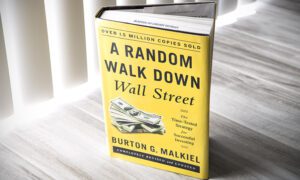

Key Takeaways:
- Efficient Market Hypothesis: Stock prices reflect all available information, making it difficult for anyone to consistently outperform the market.
- Index Funds: Malkiel advocates for investing in low-cost index funds as a way to achieve long-term returns that match the overall market.
- Long-Term Perspective: The book emphasizes the importance of patience and long-term investing.
Advantages:
- Easy to read and understand, even for beginners.
- Provides a practical and achievable investment strategy through index fund investing.
- Debunks common myths about beating the market with insider knowledge or complex strategies.
Disadvantages:
- Critics argue that it underestimates the role of active management in certain markets.
- May discourage readers from exploring more active investment strategies.
Example:
Malkiel uses the analogy of a “random walk” to describe stock price movements, meaning that trying to predict individual stock prices is futile. He suggests investing in broad-based index funds like the S&P 500, which have historically provided strong returns over time.
3. Common Stocks and Uncommon Profits by Philip Fisher
Overview:
Philip Fisher’s “Common Stocks and Uncommon Profits” is a fundamental book for investors interested in long-term growth investing. Fisher advocates for a thorough analysis of companies before making investment decisions, placing a strong emphasis on qualitative factors like management quality and product innovation.
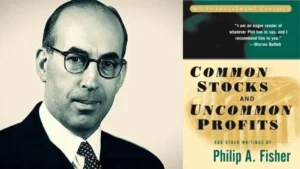

Key Takeaways:
- Growth Investing: Focus on companies with long-term growth potential rather than short-term gains.
- Qualitative Analysis: Fisher highlights the importance of analyzing non-numerical factors like management quality, research and development, and market leadership.
- Invest in What You Know: Investors should focus on industries or sectors they understand well to make informed decisions.
Advantages:
- Provides a comprehensive framework for evaluating a company beyond its financial statements.
- Encourages a patient, long-term investment approach focused on quality businesses.
- Teaches investors to think critically about the companies they invest in.
Disadvantages:
- May not appeal to investors who prefer quantitative analysis or technical trading.
- Some investors might find it challenging to apply Fisher’s principles without in-depth knowledge of the companies they are analyzing.
Example:
If you’re considering investing in a tech company, Fisher would advise looking beyond the financials and considering the company’s innovation pipeline, its leadership in the market, and the expertise of its management team.
4. The Little Book of Common Sense Investing by John C. Bogle
Overview:
John Bogle, the founder of Vanguard and the creator of the first index fund, wrote “The Little Book of Common Sense Investing” to promote his philosophy of passive investing. The book advocates for long-term investments in low-cost index funds as the best way to build wealth over time.
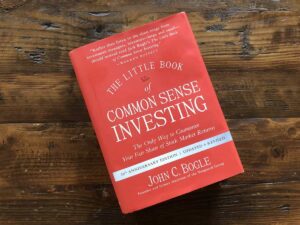

Key Takeaways:
- Index Fund Investing: Bogle emphasizes the power of investing in broad-based index funds that mirror the market’s performance.
- Costs Matter: High investment fees can eat into returns, so low-cost funds are crucial for long-term wealth accumulation.
- Stay the Course: Bogle encourages investors to remain patient and avoid trying to time the market.
Advantages:
- Simple, clear, and easy-to-understand advice for new and experienced investors alike.
- Promotes a low-risk, long-term strategy that aligns with the average investor’s goals.
- Highlights the importance of minimizing fees and costs in investment returns.
Disadvantages:
- Limited focus on alternative investment strategies beyond index funds.
- Some readers may find the advice too conservative, especially if they’re interested in more active trading or stock-picking.
Example:
Bogle argues that rather than trying to pick individual stocks or time the market, investors should put their money into a low-cost S&P 500 index fund and hold it for the long term. This approach has historically outperformed many actively managed portfolios.
5. Market Wizards by Jack D. Schwager
Overview:
“Market Wizards” by Jack Schwager is a compilation of interviews with some of the most successful traders in the world. These interviews provide insights into the mindset, strategies, and experiences of top traders, offering valuable lessons for anyone looking to understand how professionals navigate the stock market.
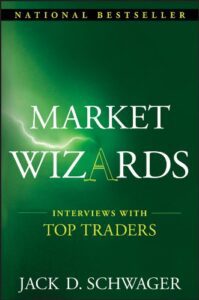

Key Takeaways:
- Mindset and Discipline: Successful trading requires a disciplined mindset and the ability to manage emotions, particularly fear and greed.
- Variety of Strategies: There is no one-size-fits-all approach to trading. Different traders use different strategies, from technical analysis to fundamental analysis, to achieve success.
- Risk Management: Successful traders prioritize managing risk above all else. Protecting your capital is more important than chasing high returns.
Advantages:
- Provides real-world insights from successful traders.
- Offers diverse strategies and approaches to trading, making it applicable to a wide range of investors.
- Emphasizes the importance of psychology and discipline in trading.
Disadvantages:
- The book is more focused on active trading rather than long-term investing.
- Some of the strategies discussed may be too complex or risky for beginner investors.
Example:
One of the traders interviewed in “Market Wizards” talks about the importance of cutting losses quickly. This means that if a trade isn’t going in your favor, it’s better to exit early and preserve your capital rather than hoping the market will turn around.
6. One Up On Wall Street by Peter Lynch
Overview:
Peter Lynch, the legendary manager of the Magellan Fund at Fidelity Investments, wrote “One Up On Wall Street” to share his investment philosophy. Lynch believes that individual investors can outperform professional fund managers by using their unique knowledge of everyday products and companies.
Key Takeaways:
- Invest in What You Know: Lynch advocates for investing in companies or industries you are familiar with, as it gives you an edge over other investors.
- Growth Stocks: Lynch emphasizes the importance of identifying growth stocks early and holding them for the long term.
- Stock Picking: Lynch provides practical tips for picking stocks, including analyzing a company’s earnings, debt levels, and competitive advantage.
Advantages:
- Encourages individual investors to leverage their personal knowledge to find investment opportunities.
- Provides practical, easy-to-understand advice on stock picking.
- Promotes a long-term, growth-oriented investment approach.
Disadvantages:
- Some of the advice may be too simplistic for more experienced investors.
- The focus on stock picking may not appeal to those who prefer passive investment strategies.
Example:
Lynch famously used the example of Hanes (the company that makes L’eggs pantyhose) as a stock he discovered because his wife bought their products. This led him to research the company further, and he ultimately invested in it.
Advantages of Reading Stock Market Books
- Comprehensive Knowledge: Books provide in-depth explanations that go beyond the surface-level understanding offered by articles or online courses.
- Diverse Perspectives: Each author brings a unique perspective to the market, from value investing to technical analysis to behavioral finance.
- Affordable Education: Compared to expensive courses or seminars, books are a relatively inexpensive way to learn about the stock market.
- Long-Term Resource: Unlike news articles that may become outdated, many stock market books offer timeless advice that remains relevant for years.
Disadvantages of Reading Stock Market Books
- Time-Consuming: Reading an entire book requires a significant time investment, which may not be feasible for everyone.
- Overload of Information: With so many books available, it can be overwhelming for beginners to decide which ones to read.
- Limited Practical Application: While books provide valuable knowledge, they often lack the interactive, hands-on experience that comes from real-world trading.
Conclusion
Books offer an excellent resource for anyone looking to deepen their understanding of the stock market. Whether you’re a beginner looking for foundational knowledge or an experienced trader seeking new strategies, the books discussed above provide valuable insights into various aspects of investing and trading. By reading these books and applying the lessons they offer, you can enhance your ability to navigate the financial markets with confidence and skill.
FAQs
1. Which book is best for stock market beginners?
For beginners, “The Intelligent Investor” by Benjamin Graham is often recommended due to its focus on value investing and risk management. “The Little Book of Common Sense Investing” by John C. Bogle is also a great choice for those interested in passive investing.
2. Can reading stock market books improve my trading skills?
Yes, reading stock market books can significantly improve your trading skills by providing valuable insights into market behavior, investment strategies, and risk management techniques.
3. Are stock market books still relevant in the age of digital trading platforms?
Absolutely. While technology has changed the way we trade, the fundamental principles of investing and market psychology remain the same. Stock market books offer timeless advice that can be applied across different trading platforms.
4. How can I apply the lessons from stock market books to real-world trading?
Start by using the strategies and principles you learn from books in your investment decisions. Focus on building a diversified portfolio, managing risk, and understanding the companies or assets you invest in.
Stock market books
Yearly Stock Market Reviews and Predictions: Insights and Strategies for Investors







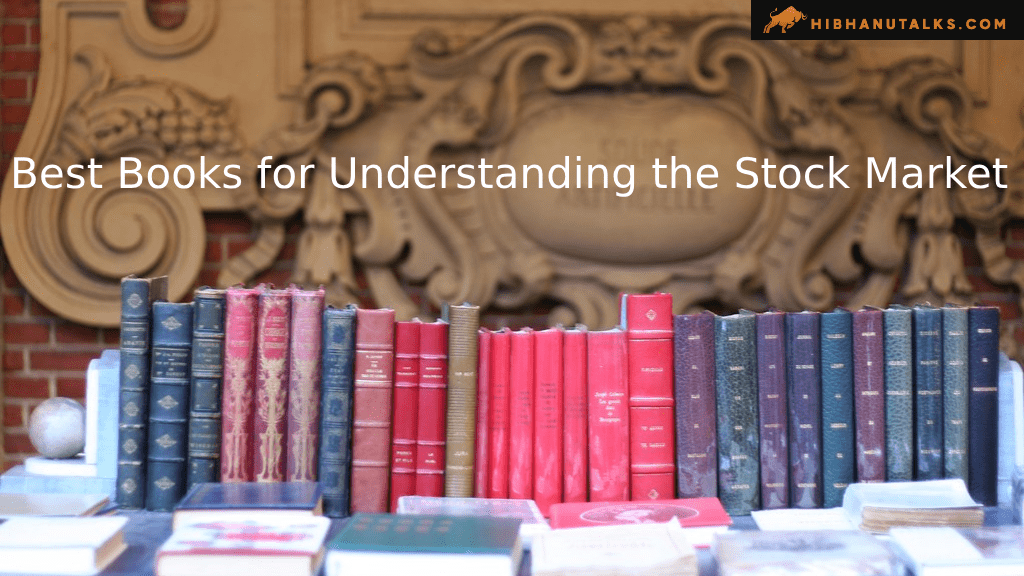













1 comment